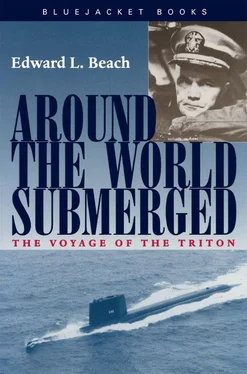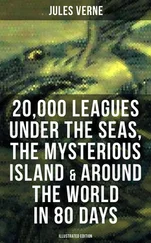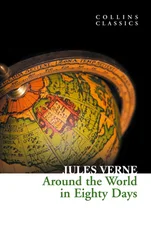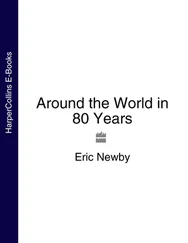While a midshipman at Annapolis, I had a classmate named Carlos J. Albert, a Philippine national, who has had quite a career since our Naval Academy days. He went back to the Philippines upon our graduation in 1939 and was commissioned in the Philippine Navy. During the war he was a thorn in the side of the Japanese, narrowly escaping death on several occasions. More recently, with the rank of Commodore, he was assigned to the post of Armed Forces Attaché at the Philippine Embassy in Washington, D.C. There, I came to know also his lovely wife, Mila, a charming, willowy Filipino girl with a beautiful and expressive face. Carlos is now in Manila—or was. Lately I have not heard what Carlos is doing, and the temptation is strong to write him a note for transmission by hydro bottle, possibly on the hydro paper itself, requesting the finder to communicate with Carlos and receive a reward. I even have the absolute authentication so far as Carlos is concerned, for all I need to do is write “What about ’39?” and he will know that it is genuine.
With a sigh, I am forced to the conclusion that this is one of those ideas which will have to be enjoyed only in the imagination. I can write Carlos a letter later on. When well clear of Magellan Bay, we release our second hydro bottle of the day, bearing a paper in no way different from the earlier one except for the serial number.
1320 Entered Hilutangan Channel headed south. This time we will proceed well below periscope depth at higher speeds than before.
1324 With the outline of the channel clear as print on our sonar visual repeater, changed depth to 150 feet and ran down the channel at 10 knots.
1407 More blasting in the distance.
1434 Clear of Hilutangan Channel, set course down Bohol Strait, increased speed to 15 knots, increased depth to 200 feet.
1504 Increased depth to 300 feet, increased speed to 20 knots.
2035 Entered Sulu Sea. Will spend the rest of the night and tomorrow morning crossing the Sulu Sea enroute to the Celebes Sea and departure from the waters of the Philippine Republic.
I have in a way also fulfilled a personal mission in this trip to the waters of the Philippine Republic. In 1898, my father was a Lieutenant in the Baltimore when Admiral Dewey defeated the Spanish Fleet at the Battle of Manila Bay. Subsequently, Dad spent several years campaigning against the Filipinos in their hopeless and heroic insurrection. From their point of view, they were fighting an American imperialistic scheme to take over where the Spanish had been forced to leave off, and although he fought against them, Father’s personal sympathies were always with the embattled Filipino farmers and their high-minded leaders. He became, in fact, acquainted with the head of the Philippine insurrection, Emilio Aguinaldo. As a boy, I remember the arrival of occasional letters to Father from this quondam national hero.
Although I am not very sure of the details, my recollection of the story is that during the initial confused stages of the insurrection, Father in some manner had arrested or captured a party of Filipinos, among whom was a young woman who turned out to be the wife of Emilio Aguinaldo. The rest of the party were apparently her protectors and servants. I am sure the United States government has long since forgiven Father [if indeed it ever knew of it] for the manner in which he handled this gratuitous “prize-of-war.” He escorted the entire party to the nearest Filipino post and bade Señora Aguinaldo a sweeping and courtly good-bye. Sometime later, Father was captured by Filipino guerrillas and detained for several hours, until peremptory orders arrived from some highly placed official that he be restored immediately to the American lines, which was done.
It should not be inferred from this yarn that the Filipino insurrection was a comic-opera war, for it was not. The Filipinos had been fighting the Spanish colonial government [a direct relic of Magellan’s landing] for several years before we got into the fight. They welcomed us with great joy, thinking our plans were the same for them as for Cuba, and that their independence was but a short time away. When they discovered that this was not our intention, at least, not at this time, with grief by some and fanatic fury by others, they commenced to fight against their erstwhile comrades. And yet, the Filipinos—most of their educated leaders anyway—knew that they were fighting the best friend their country ever had. If either war was a comic opera, it was the Spanish War, with its fake “assault” on the fortifications of Manila, not the Philippine insurrection, which was in deadly, pathetic earnest.
Saturday, 2 April 1960 0047 There is severe oscillation in our gyro repeaters, probably caused by something wrong with one or more synchro amplifiers. Shifted to direct gyro input to the helmsman and began to check out the synchro amplifiers. After some moments, the oscillations ceased and the situation reverted to normal. This may be a warning of trouble to come. With the oscillation gone, we are for the moment unable to determine what is the precise cause of the difficulty.
0135 Sonar contact on the starboard bow. A large ship, from the heavy beat of his propeller. Left him astern and lost contact after tracking him for some thirty minutes. He faded out as though a thermal sound layer had come between us.
0859 At periscope depth to fix our position prior to passing through the Pearl Bank Passage and then through Sibutu Passage into the Celebes Sea. Locating and passing through Pearl Bank Passage is somewhat like threading a needle. There is a difference, however. Should we miss the deep water hole between reefs, we have an excellent chance of digging a groove in the coral with our bow. The land is very low-lying hereabouts and it is difficult to detect by periscope or radar. A complication develops when a ship is sighted hull down on bearing 076° true, approximately 8 miles away. From course and speed it is quite possible that this fellow may be the one we detected on sonar seven hours ago. If so, we have run right past him. Very likely Triton and he are trying to thread the same needle. Proximity of the ship prevents us from raising our periscope as high as we might like, or using our retractable radar to fix our position accurately. The sea is nearly glassy; any unusual activity in the water would attract notice. Went deep, increased speed and headed for the presumed position of Pearl Bank Passage.
1130 Periscope depth again, land in sight more clearly, and we are now obtaining a rough position. Changed course to head for the presumed location of Pearl Bank Passage when again we sight the same ship, range now only seven miles, bearing 030° true.
1245 This ship is going to give us trouble. He is much higher out of the water than we, therefore can see better, and very likely he knows this area thoroughly. Although we have the speed on him, we must proceed slowly and with extreme caution, to be sure of our position before we try to run through the narrow Pearl Bank Passage. With no such problems, he has been overhauling us for the past several hours.
We believe we have Pearl Bank Passage pretty well defined now, bearing due south; and we have been steering south for about 45 minutes. We should, however, remain at periscope depth as we pass through the channel because of variable currents which the Sailing Directions say we may expect. Besides, Will says he still is not fully satisfied with the accuracy of our position. After thinking things over, it is apparent that our best bet is to let the ship precede us.
We therefore reverse course to the north to let him go first, exercising extreme caution with our periscope and swinging wide. Commander Joe Roberts and photographer Ray Meadows are in the conning tower ready to take pictures should any opportunities develop. The merchantman, a Victory freighter of World War II with black hull, white superstructure and a black-and-red shape on his funnel, goes by at range 3300 yards. We are able to take a few pictures as he passes.
Читать дальше












